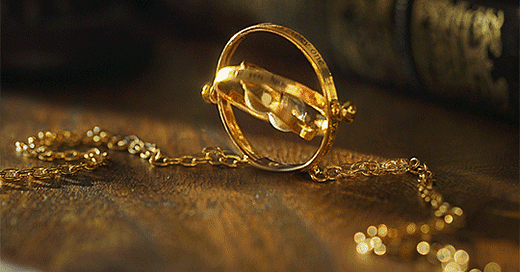In Harry Potter, there’s a moment every fan remembers. A brick wall. A trolley. A nervous boy running straight at what looks like certain collision. And then he passes through.
Platform 9¾. The space between spaces. Not visible. Not logical. But real to those who believe and brave enough to run.
When I first read that scene, I didn’t think about physics. I thought about magic. But years later, when I came across the idea of hidden dimensions in theoretical physics, I came right back to that platform.
In string theory, our universe isn’t just three-dimensional space and one line of time. There could be ten, maybe eleven dimensions curled up in ways we can’t perceive. They’re folded into reality - invisible, but necessary for the math to work.
Magic, in that sense, is not the violation of physics but an extension of it.
What J.K. Rowling did with magical world is that she revealed one. One where things we call “impossible” are simply things we haven’t learned to see yet.
The Time-Turner isn’t that far from quantum superposition. The Room of Requirement is just a metaphor for probability fields. The Pensieve is a crude neural interface. And the Patronus? A manifestation of hope strong enough to bend energy into form. That’s closer to quantum consciousness than we’re ready to admit.
Even the Hogwarts houses represent four ways of perceiving the world - bravery, knowledge, loyalty, ambition. They’re school traits that carry frameworks. And whichever one you choose shapes how you see power, danger, friendship, risk.
But the most magical idea isn’t the spells or the creatures or the flying brooms.
It’s the portal.
That moment on the platform. That threshold where fear and faith collide. Where you run full-speed into what looks like a wall and trust that something will catch you.
We all have platforms like that. The new job. The uncertain relationship. The choice to speak up when silence would be easier. You hesitate. Your hands sweat. You run anyway.
The magic isn’t on the other side.
The magic is in the running.
Physics tells us that reality may be more than what we can observe. Literature tells us that the unseen world is shaped by courage. And somewhere in between - between string theory and storytelling - is where the real spell lives.
The question isn’t just: Is magic real?
The better question is: Have you ever tried to walk through a wall that fear told you was solid?
Because maybe the barrier isn’t real.
Maybe it’s just brick and doubt.
And maybe, all this time, Platform 9¾ was never in a train station.
Maybe it’s in your mind.



